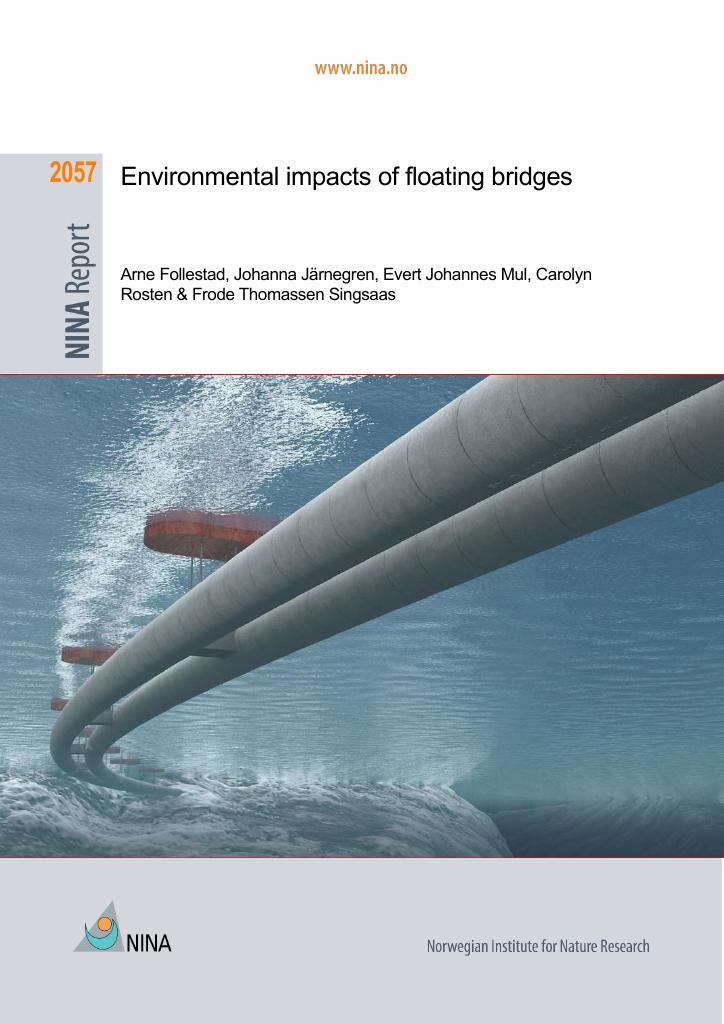Kunnskapsoppsummering
Environmental impacts of floating bridges
The Norwegian government has an ambition of better connecting the west coast of Norway between Kristiansand and Trondheim. Improvement of the fjord crossings will be the primary means of improving connections and reducing travel time. This project has been termed the Ferry Free E39 project and is the responsibility of the Norwegian Public Roads Administration (NPRA). Many of the fjord crossings on the west coast present difficulties for existing bridge and tunnel technologies due to the spans that need to be crossed, or the depths of the fjords. The NPRA is therefore scoping new solutions in the form of floating bridges and submerged, floating tube bridges (SFTB). Floating bridges and SFTB use new approaches such as suspension of bridges, or submerged tunnels, from pontoons. This enables deeper (over 400 m), or wider (over 2 km) stretches to be crossed. When evaluating new technological solutions, it is important to consider their potential environ- mental footprints. For this reason, the NPRA has commissioned the Norwegian Institute for Na- ture Research (NINA) to evaluate the potential environmental effects of floating bridges and SFTB through literature study and expert evaluation. We applied a semi-systematic literature review approach and identified 195 potentially relevant publications. Since floating bridge tech- nology is new and has, as of yet, rarely been applied in practice, little literature that directly assesses environmental effects of floating bridges is available. We addressed this by including literature from other anthropogenic structures in marine environments (e.g., offshore wind farms) which have met some of the same challenges during their construction or operation. The literature review identified four main classes of environmental impact: habitat alterations, noise pollution, light pollution, and gateways to new ecosystems (e.g. islands) for predators. These impacts were discussed in depth with consideration for both aquatic (benthic inverte- brates, zooplankton, fishes and marine mammals) and terrestrial (birds, mammals) organisms and communities. Since fjord crossings already exist in the form of ferries at all locations being considered for floating bridges, potential environmental impacts were compared to ferries, and not a null-crossing situation.
